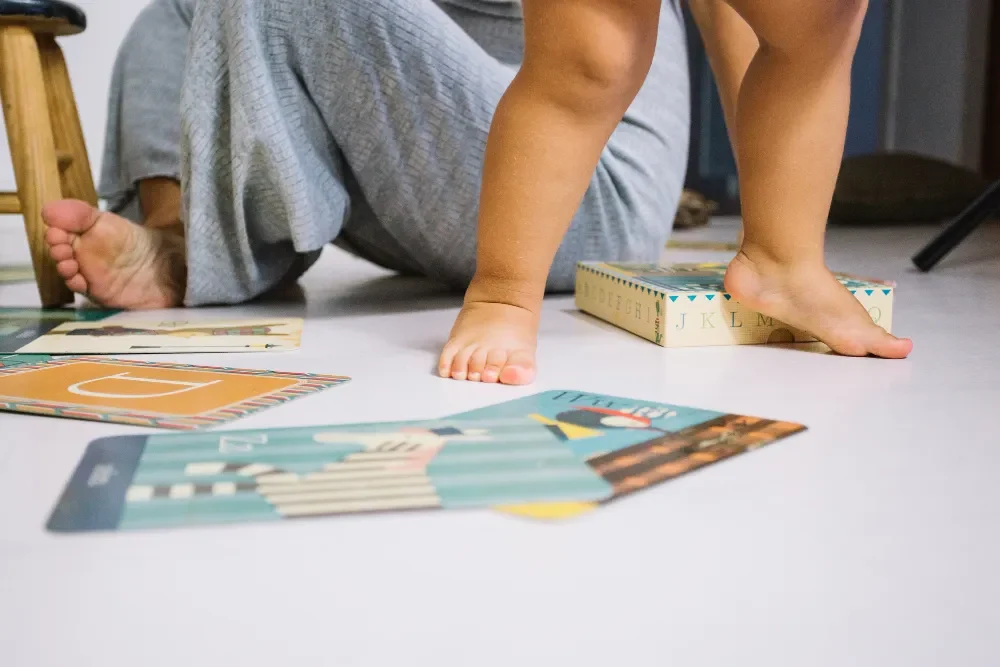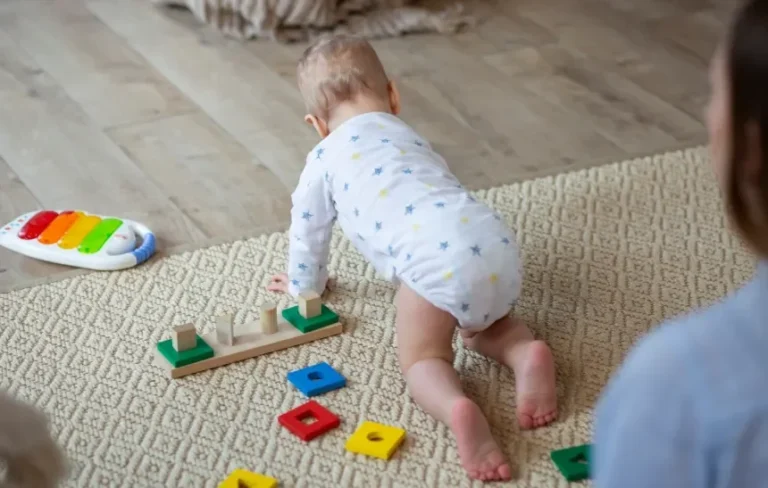Welcoming a newborn into your family is one of life’s most magical experiences. Those tiny fingers, soft coos, and wide-eyed stares melt your heart instantly. But amid the joy and sleepless nights, many new parents wonder: Is my baby developing normally? Understanding newborn development milestones provides reassurance and helps you celebrate every precious achievement. This comprehensive month-by-month tracker focuses on the critical first three months—often called the “fourth trimester”—when baby growth stages unfold rapidly. Whether you’re a first-time parent or adding to your family, this guide equips you with evidence-based insights, practical newborn tips, and real-parent scenarios to track infant progress confidently.
Why Tracking Newborn Development Milestones Matters

Every baby follows a unique timeline, yet pediatric experts like the American Academy of Pediatrics (AAP) outline general newborn development milestones to monitor health and growth. Recognizing these signs early allows you to:
- Spot potential delays and consult your pediatrician promptly.
- Bond more deeply by responding to your baby’s cues.
- Reduce anxiety with clear expectations for baby growth stages.
Think of this tracker as your personal roadmap. For example, Sarah, a first-time mom from Seattle, kept a simple notebook. When her son smiled at seven weeks, she beamed with pride—knowing it aligned perfectly with typical infant progress.
The First Month: Adjusting to the World (0-1 Month)

The initial four weeks revolve around survival and adjustment. Your newborn’s world expands from the womb’s warmth to bright lights, new sounds, and your loving arms.
Physical Milestones
- Weight gain: Babies typically regain birth weight by day 10-14 and gain 5-7 ounces weekly.
- Reflexes dominate: Rooting (turning toward touch on cheek), sucking, grasping, and Moro (startle) reflexes are strong.
- Head control: Minimal; always support the neck during holding.
Newborn Tip: Use a soft, rolled towel as a “nest” in the bassinet to mimic womb snugness, promoting better sleep.
Sensory and Social Milestones
- Vision: Sees 8-12 inches away—perfect for your face during feeding. Prefers high-contrast patterns.
- Hearing: Recognizes your voice; turns toward familiar sounds.
- First smiles: Usually reflex grins, not social ones yet.
Real Example: Mike noticed his daughter quieted instantly when he hummed the lullaby sung in the hospital. That early recognition strengthened their bond.
Feeding and Sleep Patterns
Newborns feed 8-12 times in 24 hours, sleeping 16-18 hours in short bursts. Cluster feeding in evenings is normal.
| Feeding Method | Pros | Cons |
|---|---|---|
| Breastfeeding | Boosts immunity via colostrum; promotes skin-to-skin bonding | Initial latch challenges; frequent night feeds |
| Formula | Predictable volume tracking; partners can share feeds | Higher cost; no live antibodies |
Month Two: Emerging Personality (1-2 Months)

By week five, your baby appears less fragile and more interactive. Infant progress accelerates as brain connections multiply.
Motor Skill Advances
- Smoother movements: Jerky reflexes lessen.
- Brief head lifts: During tummy time, may raise head 45 degrees for seconds.
- Hand-to-mouth coordination: Brings fists to mouth purposefully.
Newborn Tip: Offer 3-5 minutes of tummy time 2-3 times daily on a firm, safe surface. Place a mirror nearby—babies love faces!
Cognitive Leaps
- Longer alert periods: Up to 1 hour, ideal for play.
- Tracking objects: Follows a slow-moving toy 180 degrees.
- Coos and gurgles: First vowel sounds (“ah,” “oh”) emerge.
Hypothetical Scenario: Imagine little Emma fixating on a red rattle. As Dad gently moves it side to side, her eyes lock on—her brain practicing visual pathways crucial for later reading skills.
Sleep Evolution
Total sleep drops slightly to 15-17 hours, with longer nighttime stretches (3-5 hours) possible. Introduce a flexible bedtime routine: bath, massage, feed, story.
Month Three: Social Smiles and Strength (2-3 Months)

Welcome to the delightful phase! Your baby’s personality shines, and newborn development milestones become visibly rewarding.
Gross Motor Milestones
- Stronger neck muscles: Holds head steady when pulled to sit.
- Pushes up on forearms: During tummy time, resembles a mini push-up.
- Kicks vigorously: Legs alternate in “bicycle” motion.
Fine Motor Refinement
- Opens hands: Palms unfurl; swipes at toys.
- Briefly clasps hands: Midline awareness begins.
0-3 Months Comparison Table
| Milestone Area | 0-1 Month | 1-2 Months | 2-3 Months |
|---|---|---|---|
| Head Control | None; full support needed | Lifts briefly in tummy time | Holds steady when pulled to sit |
| Social Smile | Reflex only | Occasional | Consistent, responsive smiles |
| Vocalizations | Crying only | Coos (“ah-goo”) | Squeals, laughs |
| Vision | 8-12 inches, high contrast | Tracks 180° | Focuses on faces, reaches for objects |
| Sleep Stretches | 2-3 hours | 3-5 hours | 5-7 hours possible |
Language and Communication
- Social smiling: Beams at your voice or face—heart-melting!
- Varied cries: Hunger, fatigue, and discomfort cries differ in pitch.
- Imitates expressions: Stick out your tongue; baby may mimic within days.
Real Example: At a family picnic, 10-week-old Noah locked eyes with Grandma, then unleashed a gummy grin. The entire table erupted in joy, reinforcing how infant progress unites loved ones.
Sensory Integration
- Color vision sharpens: Distinguishes pastels.
- Reaches for dangling toys: Coordination improves.
- Calms to music: Rhythm soothes the nervous system.
Newborn Tip: Create a “sensory basket” with safe textures—silky scarf, crinkly paper, soft brush. Supervised exploration builds neural pathways.
Practical Guide: Daily Routines to Support 0-3 Month Milestones
Establishing predictable patterns enhances baby growth stages. Follow this step-by-step daily framework:
- Wake & Feed (every 2-3 hours): Offer breast or bottle; burp midway.
- Diaper Change & Dress: Gentle massage with lotion stimulates touch receptors.
- Alert Playtime (10-15 min): Tummy time, tracking toys, singing.
- Skin-to-Skin Contact: Regulates temperature and heartbeat.
- Nap in Quiet Space: Swaddle for newborns; transition out by 3 months if rolling.
- Evening Wind-Down: Dim lights, white noise, lullaby.
- Night Feed & Sleep: Dream feed around 10 PM to extend morning sleep.
Pro Tip: Use a wearable tracker (like a smart onesie) to log feeds and diapers—data helps pediatric visits.
Common Challenges and Myths in the First Three Months
New parents face hurdles. Let’s debunk myths and offer solutions.
Myth 1: “My baby should sleep through the night by 3 months.”
Reality: Most babies need night feeds until 6+ months. A 5-6 hour stretch is excellent progress.
Solution: Practice “drowsy but awake” put-downs to build self-soothing.
Myth 2: “Tummy time causes crying, so skip it.”
Reality: Brief, frequent sessions strengthen muscles for rolling and crawling.
Solution: Start on your chest—baby feels secure while practicing.
Challenge: Colic and Excessive Crying
Peaks around 6 weeks; lasts up to 3-4 months. The “5 S’s” (Swaddle, Side-stomach position, Shush, Swing, Suck) by Dr. Harvey Karp often help.
Real Example: Twins Leo and Lila screamed nightly. Mom discovered bicycle leg movements relieved gas—within days, evenings calmed.
Challenge: Breastfeeding Latch Issues
Painful latches signal shallow attachment.
Solution: Consult a lactation specialist early. Tongue-tie checks are crucial.
Advanced Tips for Optimizing Infant Progress Beyond Basics
Once core newborn development milestones are met, elevate stimulation:
- Baby-wearing: Carriers promote language exposure as you narrate daily tasks.
- Contrast cards: Black-and-white patterns for 0-1 month; introduce colors by month 2.
- Classical music exposure: Mozart enhances spatial reasoning (per early studies).
- Responsive parenting: Answer cries promptly—builds secure attachment, linked to better emotional regulation later.
- Record milestones: Monthly photos beside the same toy show growth vividly.
Long-Term Benefits: Consistent engagement in 0-3 months correlates with advanced language at 24 months and higher IQ scores, per longitudinal studies like the NICHD Early Child Care Research.
Red Flags: When to Consult Your Pediatrician
While variations are normal, contact your doctor if by 3 months your baby:
- Doesn’t respond to loud sounds or bright lights.
- Doesn’t follow moving objects.
- Shows no interest in feeding or has poor weight gain.
- Has persistent asymmetric movements (favors one side).
Early intervention transforms outcomes.
Conclusion
Your baby’s first three months lay the foundation for a lifetime of growth. By tracking newborn development milestones with this month-by-month guide, you’ll celebrate infant progress, navigate baby growth stages with confidence, and cherish fleeting moments. Print the comparison table, bookmark these newborn tips, and start a milestone journal today. Every coo, smile, and kick is a victory—here’s to your parenting adventure!
Frequently Asked Questions
How accurate are newborn development milestone timelines?
Timelines are averages; most babies achieve skills within a 2-4 week window. Premature infants follow corrected age.
What if my baby skips a milestone, like smiling?
Occasional skips are fine if other areas progress. Discuss concerns at well-visits; vision or hearing screens may be recommended.
Are there differences in 0-3 month milestones between breastfed and formula-fed babies?
No major developmental differences; both meet milestones equally when nutrition is adequate.
How much tummy time is safe daily for a 1-month-old?
Begin with 3-5 minutes, 2-3 times daily; increase gradually to 15-20 minutes by 3 months.
Can screen time help infant progress in the first three months?
The AAP recommends zero screen time under 18 months. Face-to-face interaction is irreplaceable for brain development.
Improving parenting skills and communication










